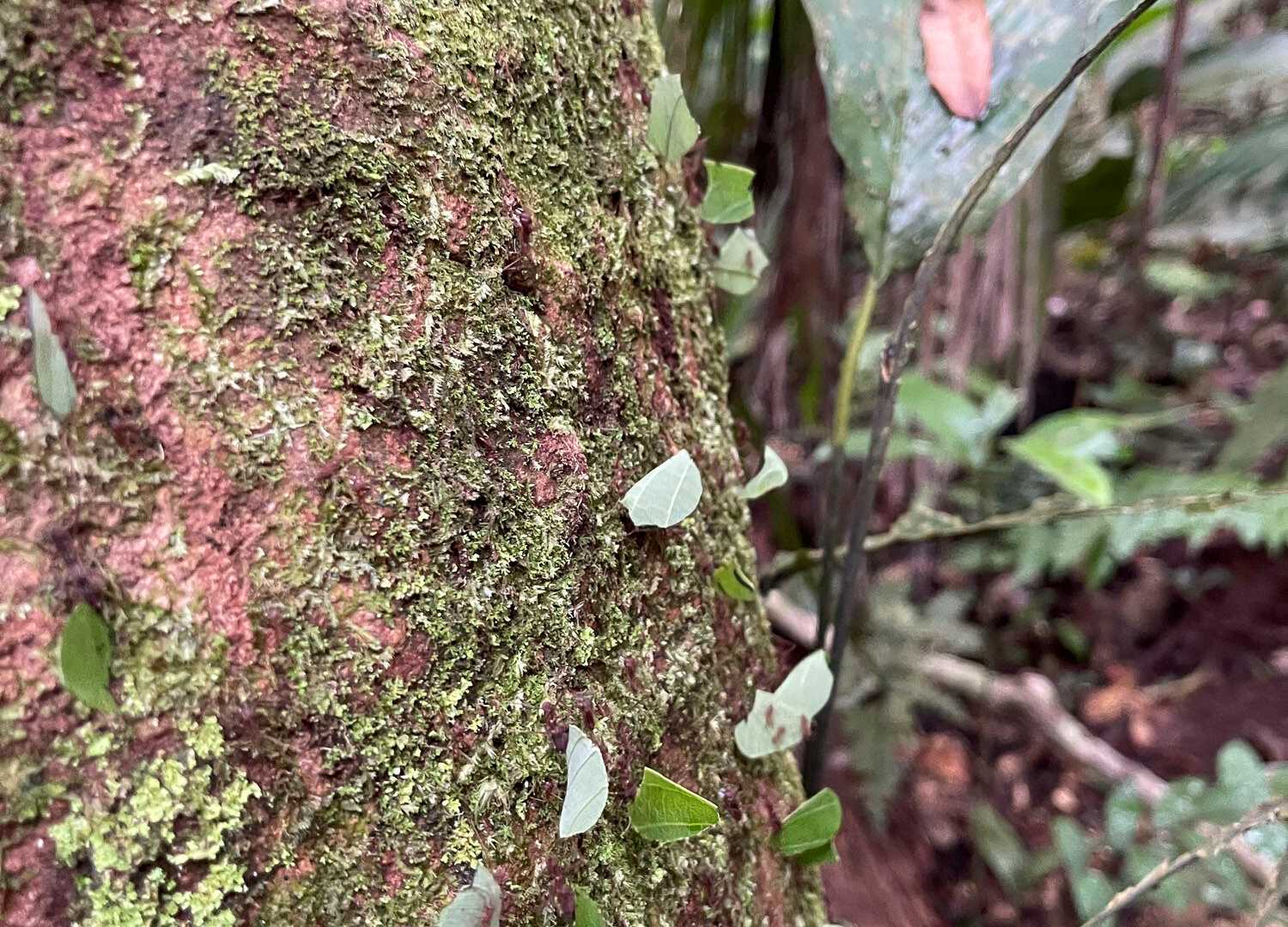On our first full day on Delfin II, we took a great hike in the Amazonas National Park. We tied together two canoes to make a catamaran and paddled across a lake to a trail that took us to a chain of suspension bridges. We observed rubber trees, leafcutter ants, bullet ants, saddle-back tamarins, various hawks, owl butterflies, and lots and lots of jungle critters. After crossing the canopy suspension bridges, trekking through rainforest, and paddling back across the lake, we found a “jungle mall” set up where we could purchase jewelry and keepsakes.
In the afternoon, we explored Nauta Caño in skiffs. We found more saddle-back tamarins, three-toed sloths, night owl monkeys, pink river dolphins, blue-and-yellow macaws, and various birds.







